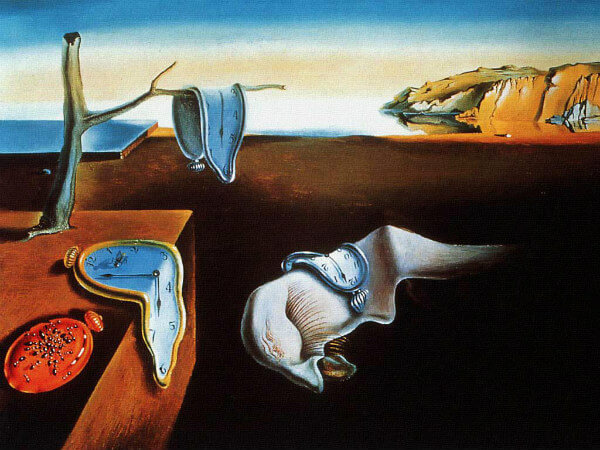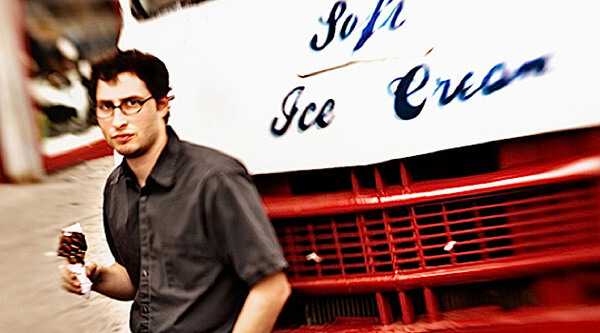 I can’t believe how many times I have seen the Kronos Quartet in the past 5 years: indoors, outdoors, in workshops, amidst ruins, with a gamelan, etc. Even more surprising is the fact that it is always a different experience. The last time that I got to see them was at Carnegie Hall in an evening of commissioned pieces from 4 different composers, tied together by the idea of persistence of memory, as expressed by Salvador Dalí in his eponymous painting. As David Harrington explained in the program notes, he even envisionned a way to get the audience through the canvas but you will have to read further to know what he meant…
I can’t believe how many times I have seen the Kronos Quartet in the past 5 years: indoors, outdoors, in workshops, amidst ruins, with a gamelan, etc. Even more surprising is the fact that it is always a different experience. The last time that I got to see them was at Carnegie Hall in an evening of commissioned pieces from 4 different composers, tied together by the idea of persistence of memory, as expressed by Salvador Dalí in his eponymous painting. As David Harrington explained in the program notes, he even envisionned a way to get the audience through the canvas but you will have to read further to know what he meant…

The program opened with a piece by Donnacha Dennehy, One Hundred Goodbyes (Cead Slan) based on samples of traditional Sean Nós ( Sean Nós in Irish means “old style” and refers to various activities, including sean-nós song and sean-nós dance) that were miraculously recorded by a man called Wilhelm Doegel on trips around Ireland from 1928 to 1931. I used the world miraculously because I am amazed at the intelligence of the Irish state for hiring (just four years after the revolution) a German field recordist, linguist and phoneticist to save the vocal folk heritage of its people. Each Sean Nós was associated with each of the three movements of the piece, performed attacca. The modality—and microtonality?—of the opening sean nós conjured images of something much more eastern that I expected: the haunting beauty of the first call to the morning prayer (adhan) by the muezzin that echoes before sunrise in Muslim countries. This sound fresco was intensely graphic to me, with strong images of bourgeoning sounds, lyrical highlights in the cello or the first violin. The suggestive power of Dennehy’s music made the projected graphics almost redundant. The recorded, historical, material added an inherited emotional layer in a very effective way.

Vladimir Martynov‘s Schubert-Quintet (Unfinished) was a lengthy tribute to/exploration of Schubert’s musical idiom. The fifth musician performing the quintet that night was no other than Joan Jeanrenaud, who left Kronos in 1999. The emotion of seeing these five wonderful musicians performing together, and the feeling of witnessing something unique was palpable in the audience.
Even though the following piece was not on the program, it was quite a treat: Philip Glass’ String Quartet No. 5, third movement, accompanying an excerpt of Bill Morrison’s documentary about the Occupy Wall St. Movement/Indignés/Arab Spring. Featuring YouTube footage of Tahrir Square, Greece, or even the notorious pepper spraying of peaceful UC Davis’s students by a moustached bivalve, the piece could be seen as a recap of what has happened last Spring as well as a reminder to stay on our toes. Glass himself was present in Zankel Hall.
Another Kronos commission was next: Nicole Lizée’s Death to Komische. Back in February, Lizée kindly answered Paul Kilbey’s questions about her piece and it has already been reviewed twice on our pages (here and there).
The last piece on the program was Michael Hearst‘s Secret Word, a tribute to Pee-wee’s Playhouse. The idea was David Harrington’s who, as a father and later a grandfather, had plenty of time to realize how rich the TV show’s sonic world was. I cannot think of better candidate to honnor such an oddball commission than Hearst. Indeed Hearst’s command of the theremin, the claviola, the stylophone, the automaton, etc. as well as his unique musical idiom (he counts as his influences Mark Mothersbaugh, Danny Elfman, Kurt Weil, Camille Saint-Saens, or even Sergei Prokofiev) made him a perfect candidate. The result was highly satisfying and was another opportunity for Kronos to showcase their ease in breaking the string quartet’s conventions by standing, moving around, picking up other instruments, etc. Lydian broken down waltzes in 5/4, candy-sweet harmonies, colorful instrumentations, transe inducing oompahs, prerecorded harpsichord and rubber chicken were all heard/seen in turn. The last element of surprise came when the quartet stood up to start fooling around with a plethora of toy instruments and other vuvuzellas, and was joined onstage by around forty members of the audience (who apparently were lucky enough to be granted a kind of “Golden Ticket”). Back to their instruments, Kronos led the impromptu and cacophonic ensemble to an incredibly high, loud (and orgasmic?) apex sustained by a stratospheric theremin—the musical equivalent of a Sour Patch Kids O.D. The piece ended an a creepy note (coulrophobics unite!): a loud sample of Pee-wee’s signature laugh.

Kronos deserves to be praised for their very clever, organic programming always challenging audiences with various levels of connection: emotional, semantic, thematic, etc. Seeing them live is always a rewarding experience that stretches way beyond musical enjoyment, building cultural bridges and raising awareness in a genuine humanist way.
—
Thomas Deneuville, the founder and editor of I Care if You Listen, is a French-born composer living in NY. Find him on Twitter: @tonalfreak
























